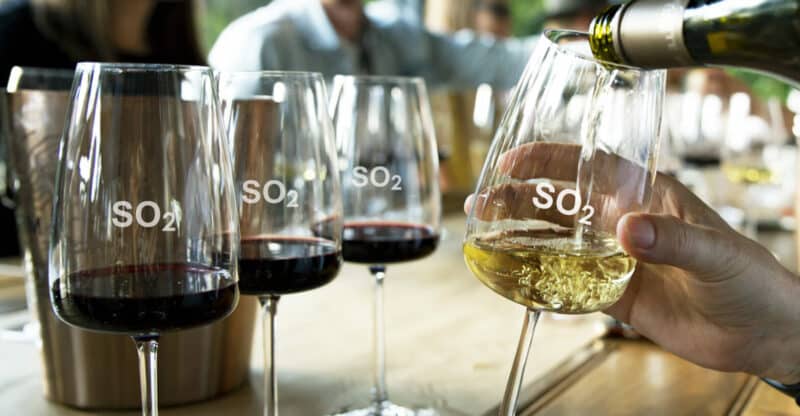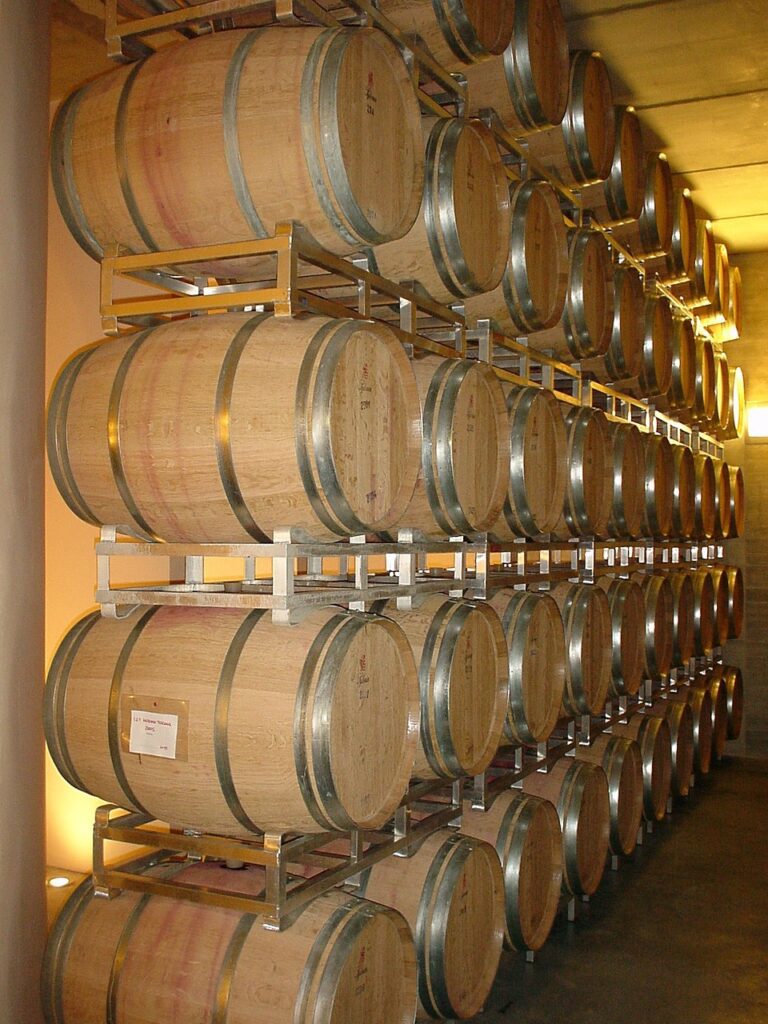Winemakers know the sulphur dioxide terminologies like free sulphur, total sulphur, molecular sulphur and its anti-oxidative and anti-microbial characteristics, but the links between them are not always very clear.
The role of sulphur dioxide as a microbial preservative can be substituted to quite an extent by other preservatives, but its ability to limit oxidative aromas and colour browning remains difficult to substitute.
The role of sulphur dioxide in redox reactions must be understood better to do more research about it.

Free sulphur dioxide
Sulphite or SO2 is often used as a blanket term for the pungent gas in compressed gas cylinders and several other sources like potassium metabisulphite or aqueous solutions of sulphur dioxide.
The preservative properties of sulphur dioxide can primarily be attributed to the so-called free SO2, which consists of neutral molecular SO2 and its corresponding base bisulphite (HSO3–). These two exist in a rapid equilibrium.
At a wine pH of 3 to 4, the bisulphite is more than 95% of the free SO2, with even higher proportions at higher pHs. Bisulphite is the primary form responsible for the anti-oxidative and anti-enzymatic activities of SO2.
Winemakers usually aim to maintain a free SO2-concentration of 20 to 40 mg/L to prevent oxidation or the release of bound oxidative aromas.
Anti-microbial activities are attributed to molecular SO2 and a 0.4 to 1.0 mg/L molecular SO2 concentration is the aim, depending on the sweetness of the wine.
The fermentation risk of sweetish wines is higher and requires a higher concentration.
As mentioned above the percentage of molecular SO2 is influenced by pH, so the concentrations of the two forms must be considered separately.

Bound sulphur dioxide
Some of the bisulphite will combine with other wine components to form bound SO2.
These include strongly binding acetaldehyde (with a prominent bruised apple aroma) and weaker binding aldehydes such as methional, as well as sugars, anthocyanins and other components, which do not contribute to an oxidative character.
The bound and free SO2 are in equilibrium and if some free is used in oxidation reactions, the bound SO2 will dissociate to restore the equilibrium.
Contrary to the near-instantaneous restoration of the molecular and bisulphite equilibrium, the equilibrium between free and bound SO2 may require hours or days.
Total sulphur dioxide
The sum of free and bound SO2 is expressed as the total SO2, which is the concentration legally prescribed in different countries. In South Africa it is 160 mg/L depending on different conditions.
Research has confirmed that bisulphite (HSO3–) is the antioxidant form of sulphur dioxide. It does not bind the oxygen as such, but reacts with different wine oxidation products.
Two wine oxidation pathways, namely the iron-phenolic and copper-sulphydryl exist. The first pathway seems to be the major oxygen consumption pathway. Its key steps can be summarised as follows:
- Oxygen reacts rapidly with the reduced ferro form of iron (Fe+2) to form its oxidised ferric form (Fe+3) and hydrogen peroxide. Fe+3 then oxidises the phenolic compounds to quinones and is returned to the Fe+2. Iron thus functions as a recycling oxidation catalyst enabling oxygen to act as an oxidant.
- Quinones can react with different desirable thiols. Bisulphites can however reduce quinones back to their phenolic form and prevent their further oxidation reactions.
- Hydrogen peroxide (H2O2) may undergo the so-called Fenton reaction in the presence of Fe+2 to form hydroxyl free radicals. These radicals can oxidise alcohols to form compounds with oxidation aromas or contribute to browning. The oxidation of ethanol by the Fenton reaction leads for example to acetaldehyde, which causes the so-called bruised apple character.
Bisulphite can consequently prevent oxidation in three different ways:
- It reacts with quinones and hydrogen peroxide to prevent their further oxidative reactions with wine components.
- The rapid reaction of bisulphite with hydrogen peroxide and quinones accelerates the oxygen consumption of wine, which limits the participation of oxygen in other pathways and leads to thiol losses.
- Bisulphites can bind acetaldehyde and other oxidation aromas resulting in non-odorous aromas.
The loss of free bisulphite will be replenished by the dissociation of bound sulphur dioxide to restore the equilibrium between the forms.

Oxidised aromas
The oxidised aromas of wines can mainly be attributed to free aldehydes, which are not bound to sulphur dioxide.
It consists of acetaldehyde (bruised apple aroma), phenylacetaldehyde (honey character) and methional (baked potato character). The increase in the aldehyde concentrations can occur via two different pathways:
- As a result of the Fenton reaction, aldehydes can be formed through iron catalysed oxidation of alcohols by hydrogen peroxide.
- Following the loss of bisulphite, bound sulphur dioxide will release acetaldehyde that was bound during alcoholic fermentation, to restore the equilibrium between the two sulphur dioxide forms.
Little evidence proves that the Fenton reaction plays a role in the aldehyde formation of real wines.
The following conclusions can be made with the recent available data:
- Trace levels of free sulphur dioxide are required to react rapidly with hydrogen peroxide preventing the Fenton reaction.
- The rate of bound SO2 dissociation from acetaldehyde or anthocyanin adducts is quicker than the ingress of oxygen to wine. Aldehyde aromas are rather the result of dissociation from bound forms than formed during wine storage due to oxygen ingress.
- Aldehydes are formed during alcoholic fermentation through amino acids formation, and if SO2 is added to wines after fermentation these aldehydes are bound, which can be liberated by dissociation at a later stage. The aldehyde formation can be limited by lees contact (“sur lie”) after fermentation.
- By applying micro-oxygenation (MOX) during red wine making, it is believed wines are softened due to the polymerisation of tannins and anthocyanins. This can also be reconsidered by rather utilising the acetaldehyde liberated from the dissociated bound form with sulphur dioxide.
- Sulphur dioxide can also be consumed by other wine components in the absence of oxidation, implying that such wine can smell oxidised if bound acetaldehyde is released due to dissociation.
Reference
Sacks, G., Howe, P. & Danilewics, J., 2022. ASEV 2021: Keynote lecture: New insights into bound SO2 and wine oxidation. Wine Business Monthly, April 2022: 44 – 49.
Click here to get your copy of WineLand Magazine and here to subscribe to our newsletter.













